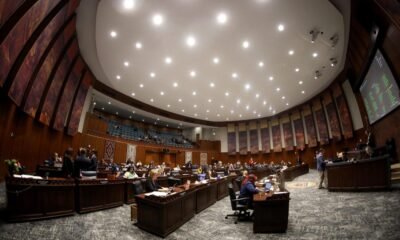aggregate expenditure limit
Lawmakers Grapple with School Spending Limits: Waiver or Lasting Solution?

Arizona legislators are once again grappling with the aggregate expenditure limit that constrains school district budgets, as discussions about a long-term solution remain unresolved. With another necessary waiver approved, the focus is shifting toward finding a more permanent fix amid growing budget pressures.
For the fifth consecutive fiscal year, lawmakers have moved to avert nearly $1 billion in potential cuts to education funding. On February 18, a new legislative proposal secured its initial approval in committee, although suggestions to modify or eliminate the outdated limit have made little progress.
Education advocates assert the need to modernize the 1980s-era spending cap to reflect current funding realities. However, debates about the specifics of any reform continue to evolve.
Chuck Essigs, director of governmental affairs for the Arizona Association of School Business Officials, emphasized the urgency of the situation. “We’re not just going to surpass the limit; we are going to continue exceeding it until we revise how it’s calculated,” he stated.
Originally established in 1980 through voter approval, the limit ties school spending to inflation and changes in student population but has required legislative waivers multiple times since then. The need for these waivers has grown particularly acute since the pandemic, which saw school districts exceeding the limit by significant margins—$1.15 billion in FY2022, with similar projections for FY2024 and FY2025.
To address the anticipated budgetary crisis in FY2026, Rep. Matt Gress, R-Phoenix, introduced House Concurrent Resolution 2003 to authorize another year-long waiver. This strategy has become an annual necessity to prevent devastating cuts.
Increased state funding for public schools is characteristic of what Gress referred to as an “annual exercise” of exceeding the cap, necessitating legislative intervention to preserve school budgets. According to a report by the Joint Legislative Budget Committee, per-pupil funding from the state rose dramatically, from $4,529 in FY2016 to $8,072 in FY2025.
Essigs pointed out that some funds, such as those from the Classroom Site Fund established by Proposition 301 in 2000, are exempt from the limit. However, when the sales tax extension occurred in 2018, that exemption was not included, exacerbating the budget scenario.
He proposed potential reforms, such as exempting certain funds or adjusting the formula to consider different student needs, particularly for those with disabilities or socioeconomically disadvantaged backgrounds. “Why maintain a limit on spending authority when the legislature has full control over budgets?” he questioned.
Marisol Garcia, president of the Arizona Education Association, criticized the continued reliance on waivers, calling it a minimal solution. “We need a complete reevaluation or elimination of this limit,” she said, expressing disappointment over the cycle of budget maneuvers that impacts educators and students alike.
Groups advocating for education have called for integrating the limit with Proposition 123 discussions, focusing on how to allocate funding from the state land trust for education. Meghaen Dell’Artino, a lobbyist for the Education Finance Reform Group, highlighted the critical need for schools to access their allocated funds without restrictions from outdated limits.
While Gress advocates for updating the aggregate expenditure limit to align with current funding needs, he argues for retaining some form of the limit to stimulate constructive discussions around education funding. “It’s vital to consider the state of education funding for the long term,” he asserted.
The upcoming session offers both challenges and opportunities as lawmakers continue to navigate the intricacies of school funding and budget management. With debates intensifying, the focus remains on preventing immediate funding crises while exploring lasting solutions to an enduring issue.


















